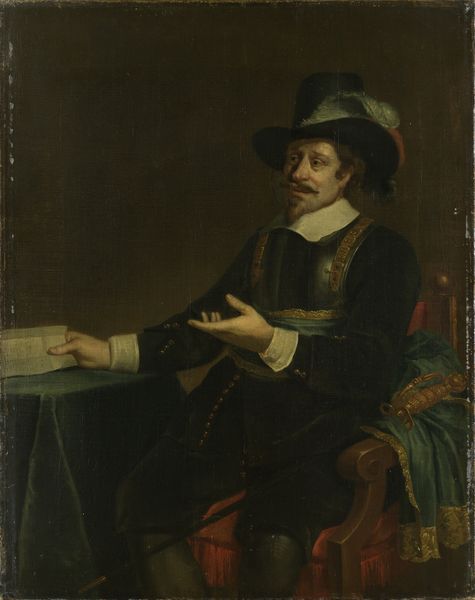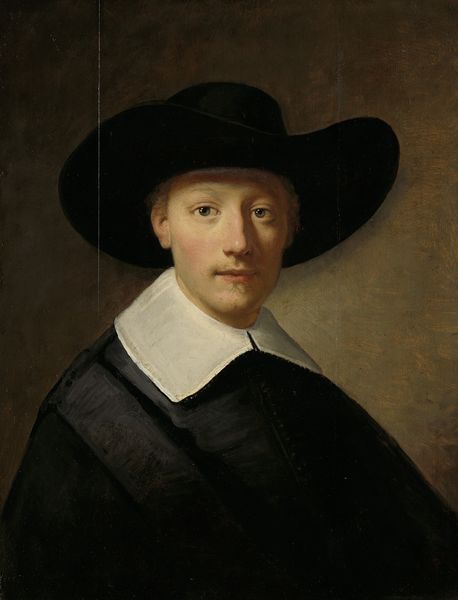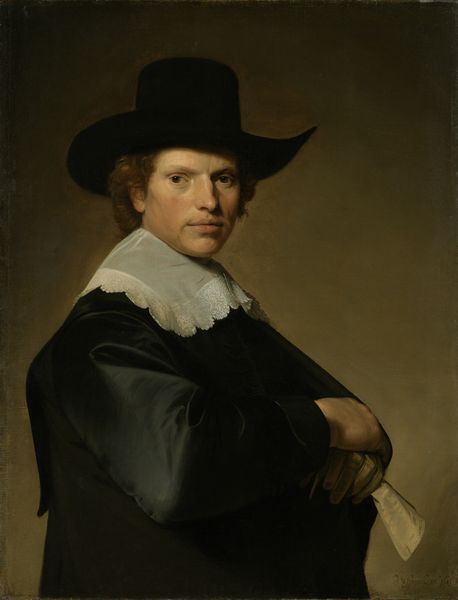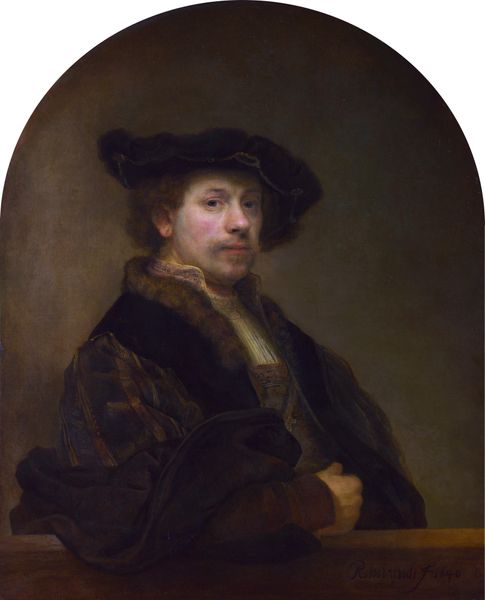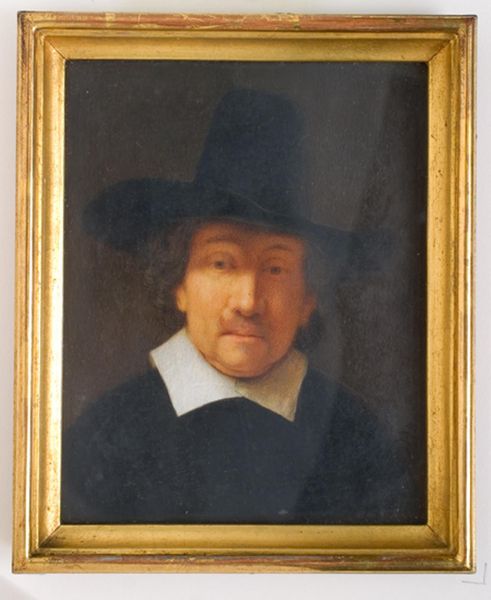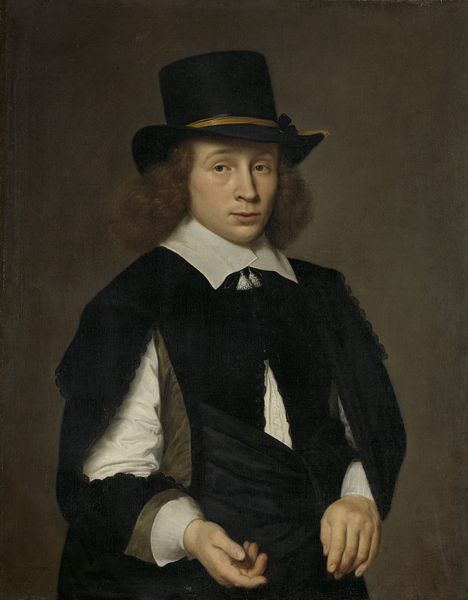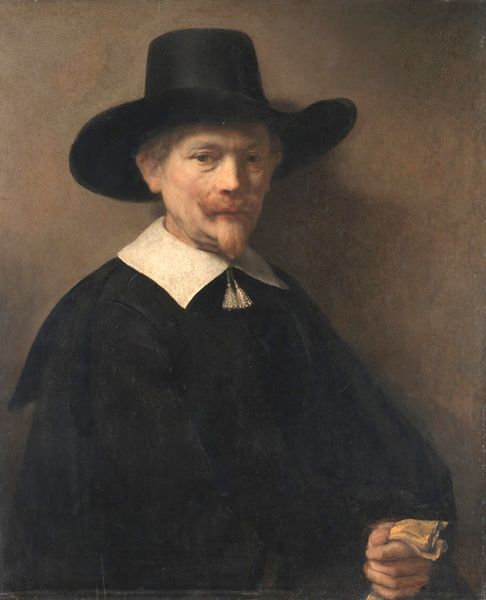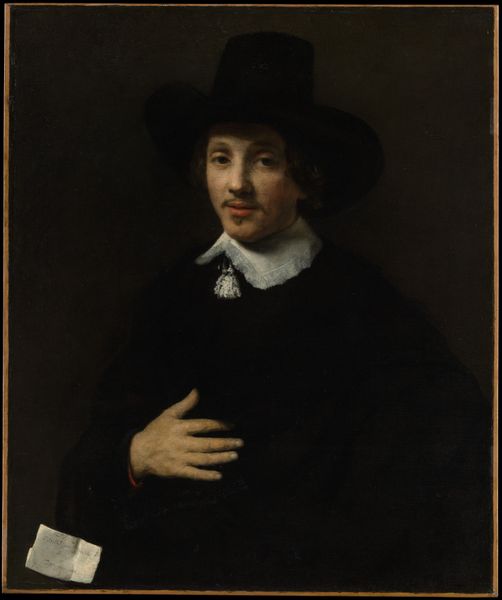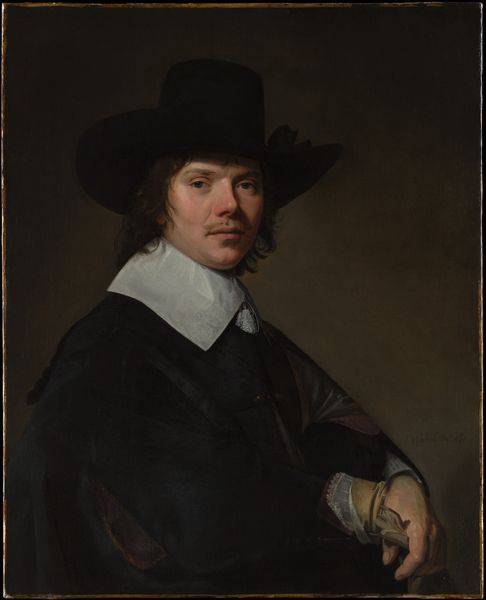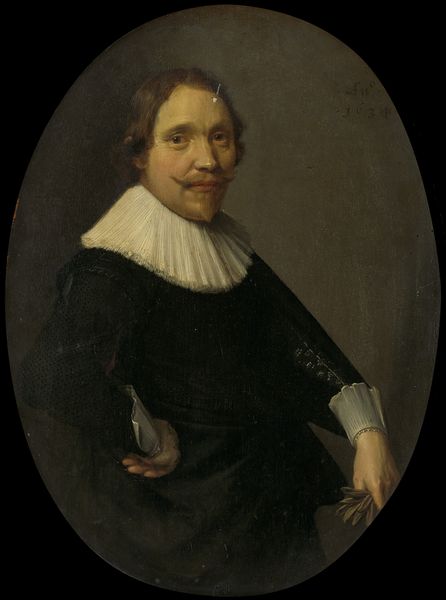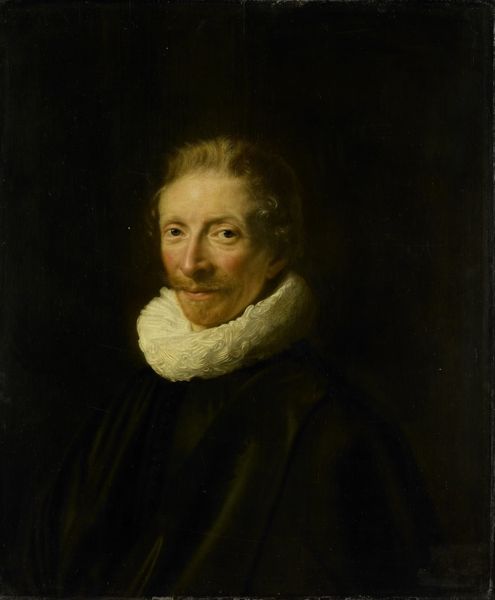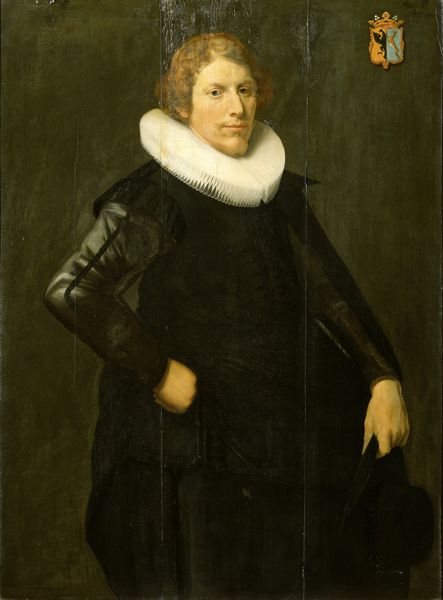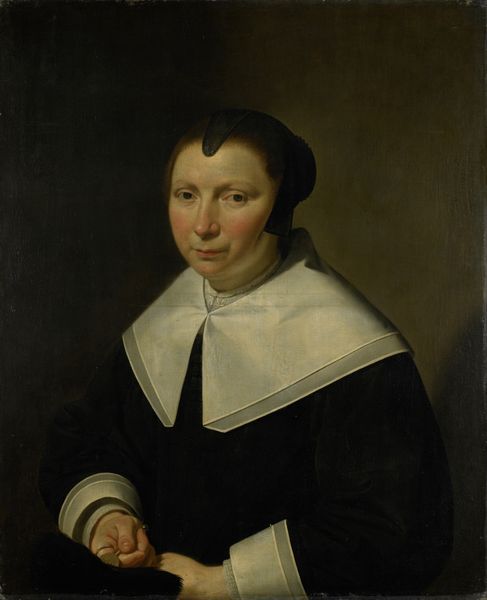
Gerard Abrahamsz van der Schalcke (1609-67). Haarlem Cloth Merchant 1644
0:00
0:00
painting, oil-paint
#
portrait
#
baroque
#
dutch-golden-age
#
painting
#
oil-paint
#
genre-painting
#
realism
Dimensions: height 29.5 cm, width 23.5 cm
Copyright: Rijks Museum: Open Domain
Curator: Here we have a rather splendid portrait from 1644 by Gerard ter Borch, often called Ter Borch the Younger. The painting is of a Haarlem cloth merchant named Gerard Abrahamsz van der Schalcke. It currently resides in the Rijksmuseum collection. Editor: My immediate reaction is one of subdued opulence. There's a richness implied in the dark fabrics and the composed expression, but it’s all held back, reserved. The oval composition gives it a distinctive form. Curator: That’s quite perceptive. Ter Borch was a master of capturing the burgeoning merchant class in the Dutch Golden Age. This painting epitomizes that, doesn't it? Note how Van der Schalcke isn’t adorned with overt symbols of wealth, but rather a quiet confidence is conveyed through his attire and posture. Editor: Yes, the lack of excessive adornment is interesting. One might consider it a conscious presentation of self, carefully constructing a respectable and perhaps even pious image within the context of a burgeoning capitalist society. It brings questions to mind regarding the Protestant work ethic. Curator: Precisely! The Dutch Golden Age was a time of great economic and social transformation. Artists like Ter Borch served as documentarians, in a sense, capturing the changing faces and values of their society. It’s fascinating to consider the historical implications of this visual representation. Editor: I think situating van der Schalcke, in the historical climate allows us to understand the portrait beyond the idea of representation and beauty. By using that understanding as a method, one can start to recognize the dynamic intersections between class, labor, gender, and the gaze. Curator: Certainly. The painting embodies the changing cultural dynamics of 17th-century Haarlem, a city prospering due to the textile trade. It is a lens through which we may view the era’s sociopolitical constructs of trade and wealth. Editor: And a society deeply shaped by trade that unfortunately benefited directly from exploitative commerce sanctioned and protected by colonialist forces. Curator: Indeed. The seemingly straightforward portrait is actually incredibly layered when viewed through a historical and activist lens. It can reveal truths about wealth, privilege, and power dynamics that extend far beyond the frame. Editor: Absolutely. It urges us to critically assess the past while keeping contemporary challenges in view. Curator: A final moment of contemplation before we proceed to our next artwork perhaps? Editor: Agreed. This has given me a lot to think about.
Comments
No comments
Be the first to comment and join the conversation on the ultimate creative platform.

